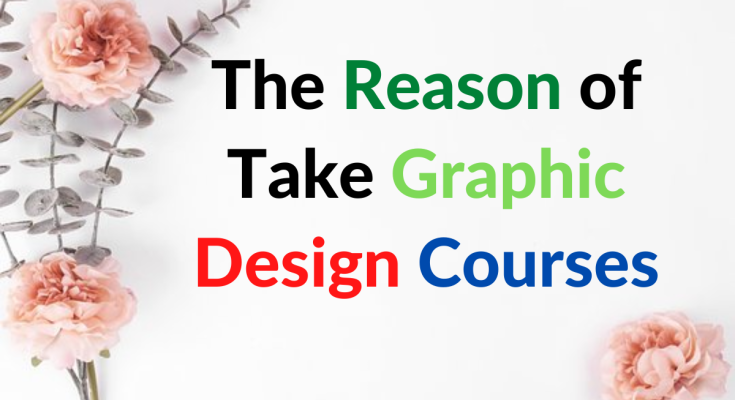Graphic design courses teach students the principles of visual communication and how to apply them to create effective designs for a variety of mediums such as print, digital, and multimedia. These courses cover topics such as typography, color theory, composition, and layout. Students also learn to use industry-standard design software such as Adobe Photoshop, Illustrator, and InDesign. Some programs may also include courses in web design, animation, and branding. Graphic design courses can lead to careers in fields such as advertising, branding, packaging, web design, and more.
What are long-tail keywords in seo 2023
What are graphic design courses?
Graphic design courses are educational programs that teach students the principles of visual communication and how to apply them to create effective designs.
1. Principles of visual communication:
This includes understanding how to use color, typography, composition, and other design elements to create a cohesive and effective message.
2. Application of design principles:
Students learn to apply the principles of visual communication to create designs for various mediums, including print, digital, and multimedia.
3. Industry-standard software:
Students learn to use software such as Adobe Photoshop, Illustrator, and InDesign to create professional designs.
4. Specialized topics:
Some programs may also include courses in web design, animation, branding, and other specialized areas of graphic design.
5. Career opportunities:
Graphic design courses can lead to a wide range of career opportunities in fields such as advertising, branding, packaging, web design, and more.
What are the 4 types of graphic designers?
Graphic design is a broad discipline that includes many different disciplines. It can refer to the design of building façades, the design of signage, or the design of a poster. We will be discussing the 4 different types of graphic designers.
There are many different types of graphic designers, but some of the most common include:
1. Print designers:
These designers create designs for print materials such as brochures, magazines, posters, and packaging. They work with typography, color, and imagery to create visually appealing layouts that effectively communicate a message.
2. Web designers
These designers create designs for websites, mobile apps, and other digital platforms. They work with web technologies such as HTML, CSS, and JavaScript to create user-friendly and visually appealing interfaces.
3. Motion graphic designers:
These designers create animations, video effects, and other motion graphics for film, television, and digital media. They use software such as Adobe After Effects and Premiere Pro to create moving images.
4. Branding designers:
These designers create visual identities for companies, organizations, and products. They work on creating a visual language, logos, typography, color palette, and imagery to represent a brand.
How do I learn graphics design?
There are several ways to learn graphic design, including:
Formal education:
One of the best ways to learn graphic design is through a formal education program. Graphic design programs are offered at the undergraduate and graduate levels at colleges and universities. These programs typically include courses in design theory, software, and portfolio development.
Online courses:
There are many online courses and tutorials available that teach graphic design. Some popular platforms for online learning include Udemy, Coursera, and Skillshare. These courses can be a flexible and cost-effective way to learn graphic design.
Books and tutorials:
There are many books and tutorials available that cover various aspects of graphic design. These can be great resources for learning design principles, software, and techniques.
Practice and experimentation:
The most important way to learn graphic design is through practice and experimentation. By working on your projects and experimenting with different design elements, you can develop your skills and gain a deeper understanding of the design process.
Mentorship:
Working under or alongside a professional designer can be a great way to learn graphic design. A mentor can provide guidance, and feedback, and help you understand the industry.
Community and Networking:
Joining design communities, participating in design contests, or attending design events and conferences can help you learn new techniques, stay updated with industry trends, and connect with other designers and professionals.
Which course is best for graphic design?
The best course for graphic design will depend on your learning style, goals, and budget, with options ranging from formal education programs at colleges and universities to online courses and tutorials, self-study through books and tutorials, and mentorship from professional designers. It is important to research different options and consider factors such as cost, course content, and the qualifications of the instructors before making a decision. Also, you can try the Fiverr graphic design course.
Graphics design course online
Online graphic design courses can be a great option for a variety of reasons:
Flexibility:
Online graphic design courses are typically self-paced, allowing students to learn on their schedule and from anywhere with an internet connection.
Cost-effective:
Online graphic design courses are generally less expensive than traditional in-person courses, and some platforms like Coursera and Udemy offer free courses or have a financial aid option.
Wide range of courses:
Online graphic design courses are available on a variety of platforms and cover a wide range of topics, making it easy to find a course that fits your interests and goals.
Convenient:
Online graphic design courses can be accessed at any time, making it easy to fit learning into a busy schedule.
Access to industry-standard software: Many online graphic design courses include instruction on using industry-standard software such as Adobe Photoshop, Illustrator, and InDesign.
Interaction with other students:
Some online graphic design courses have interactive features like discussion boards, live sessions, and projects which allows students to connect with their peers and instructors.
Online graphic design courses are taught by a wide range of instructors, including professional designers, educators, and industry experts.
Access to a vast library of resources: Many online graphic design courses provide students with access to a vast library of resources like templates, design elements, tutorials, and more.
It is important to note that online graphic design courses are not for everyone and it’s important to choose a reputable course and platform to ensure that you get the best education possible.
The article about taking graphic design courses is to help you find the reasons why you should take a graphic design course and the benefits of taking one. We hope that you enjoyed this article and that it was helpful to you. Thank you for reading, we would love to hear from you!





One Comment on “The Reason To Take Graphic Design Courses”